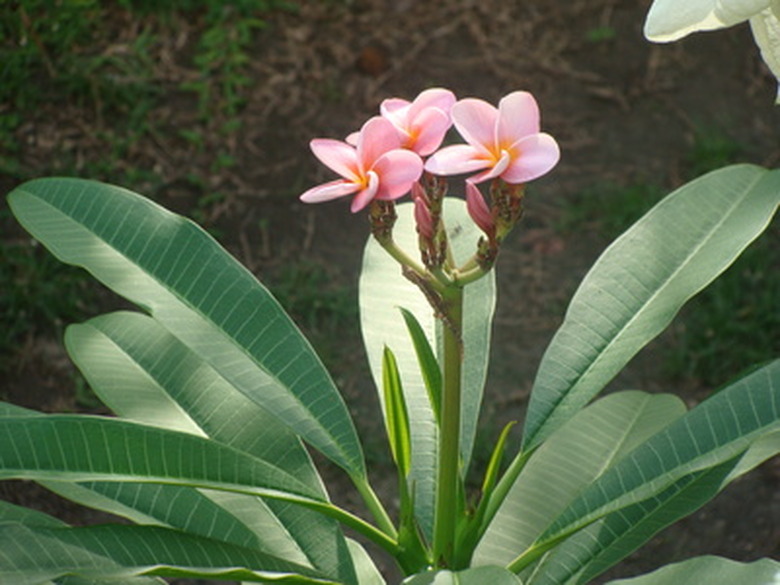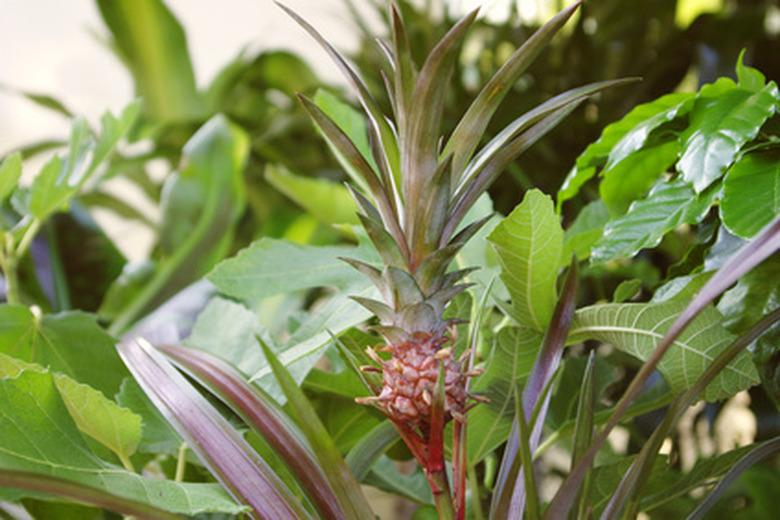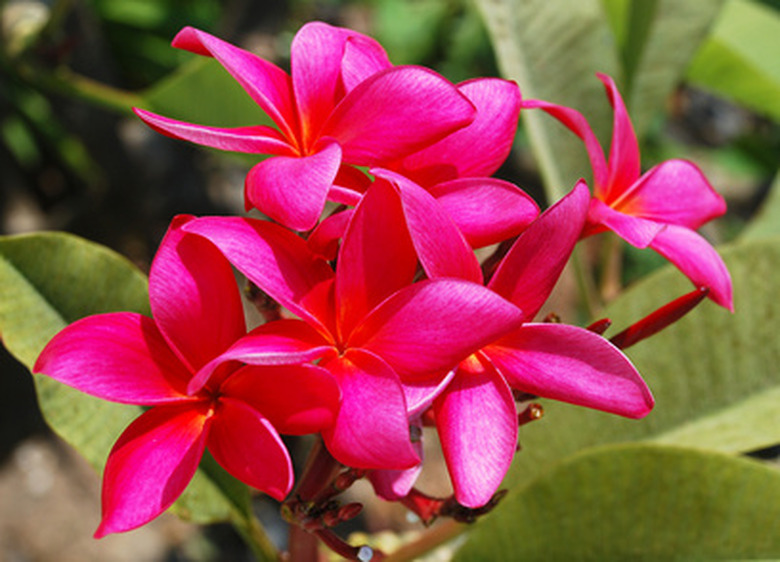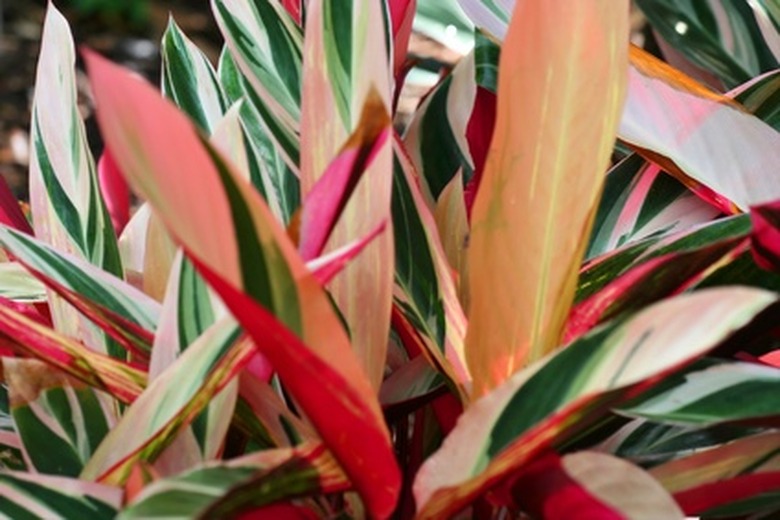Shallow Rooted Tropical Plants
Tropical plants are generally native to large rain forest systems where shallow root systems are a requirement for taking in nutrients. Their surface roots make up a large network that is used to taking in nutrients from decaying leaf debris breaking down on the soil's surface. When planting tropical plants it is important to keep the planting site weed-free, as the unwanted vegetation robs the tropical plants of their nutrients and affects the plant's growth rate. Tropical plants are frost sensitive and gardeners living in cooler areas of the United States should grow then inside containers or treat them as annuals.
Pineapple (Ananas comosus)
Pineapple plants are members of the family Bromeliaceae. The herbaceous perennial grows wild throughout its native lands of Brazil and Paraguay. In the late 1400s, Columbus carried the fruit back to Spain and there it spread throughout Europe and Asia.
- Tropical plants are generally native to large rain forest systems where shallow root systems are a requirement for taking in nutrients.
- Tropical plants are frost sensitive and gardeners living in cooler areas of the United States should grow then inside containers or treat them as annuals.
Tropical in nature, pineapples are frost sensitive and will thrive outdoors in areas where temperatures rarely drop to 28 degrees Fahrenheit. Gardeners living in cooler regions should grow plants inside containers, as its shallow root system makes it well adapted to container growth. In fact, its shallow root system functions to only hold the plant upright, as nourishment is taken in through its center rosette where fruits are born.
Plants prefer growing in full sun, a well-drained site and can reach 2 to 5 feet in height, depending on the cultivar. Plants produce fruits in approximately two years after planting and require a fertilizer application every four months of a product high in nitrogen.
Frangipani (Plumeria)
Native to Mexico and Panama, Frangipani is a small, tropical tree known for its colorful and fragrant blooms. Its shallow root system, make it suitable for planting around pools or along driveways. Plants grow best planted in the ground in frost-free areas of the United States. Cooler regions should grow plants inside containers.
- Tropical in nature, pineapples are frost sensitive and will thrive outdoors in areas where temperatures rarely drop to 28 degrees Fahrenheit.
- Gardeners living in cooler regions should grow plants inside containers, as its shallow root system makes it well adapted to container growth.
Frangipani, prefer growing in full sun and in soil that drains well, as they will develop root rot if planted in water logged areas. Consider that plants can reach 20 feet in height and width, when selecting a planting site. Flowers bloom throughout summer and early fall and color depends on the cultivar, as there is a variety. Drought tolerant, frangipani requires weekly watering with no water given during periods of dormancy. Fertilize once per month with as 6-20-20 fertilizer during the growing season.
Ti Plant (Cordyline terminalis)
Belonging in the family Agaveaceae, ti plants are native to Asia. Hardy grown outdoors in the subtropical and tropical regions of the United States, areas experiencing annual frost should grow ti plants inside containers. Its shallow root system makes ti plants suitable for planting around pools and walkways.
- Frangipani, prefer growing in full sun and in soil that drains well, as they will develop root rot if planted in water logged areas.
Grown primarily for its colorful, variegated foliage in hues of pinks, reds and greens, ti plant's flowers are small and insignificant. Depending on cultivar, plants can reach 8 feet in height with a 4-foot spread. Plants prefer growing in partial sun or shade in a rich, well draining site. The intensity of the leaves colors vary depending on the amount of light the plant receives.



